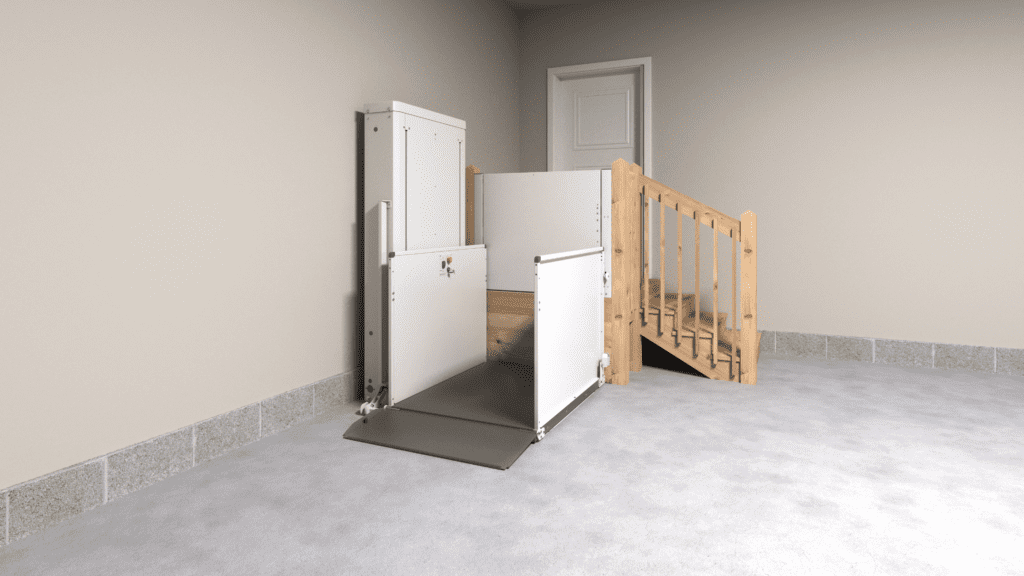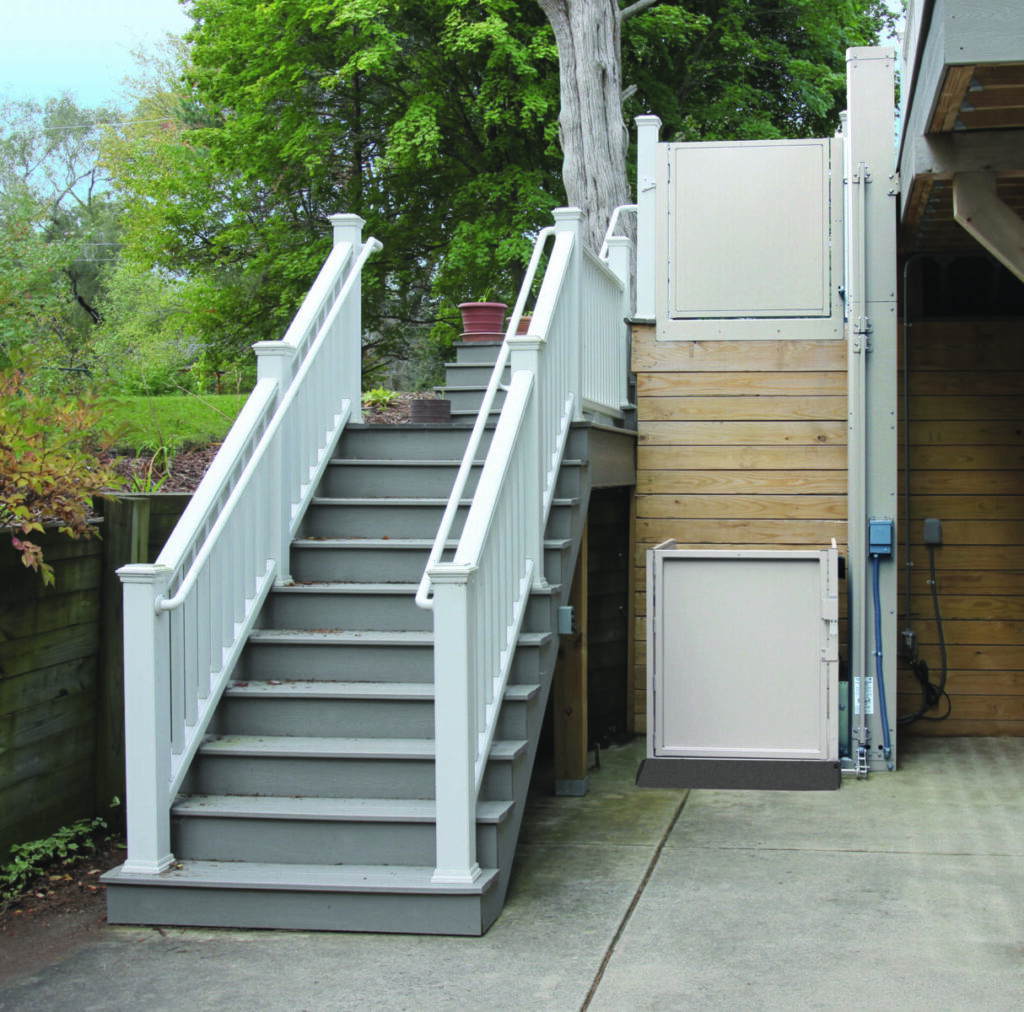For many Americans with disabilities, navigating the world around them comes with its own set of challenges and obstacles that they must face daily. For individuals with disabilities that leave them in a wheelchair, daily tasks such as climbing stairs become insurmountable and dangerous to navigate on their own. Tools such as wheelchair lifts are meant to make sure that everyone can still see and experience the same things while keeping safety in mind and understanding ADA wheelchair lift requirements helps guarantee these tools meet the necessary standards to support individuals effectively.
Wheelchair lifts should be installed by a professional to ensure they follow set compliance standards. The Americans with Disabilities Act (ADA) works as a set of regulations that equipment such as wheelchair lifts must abide by to keep users safe. ADA compliance is more than just a suggestion that organizations are encouraged to follow to the best of their abilities. The ADA is a law. Not abiding by their regulations can lead to serious legal repercussions and is considered a form of discrimination.
These regulations are designed to keep everyone safe as we navigate public spaces and ensure that all can access the same places and businesses. To provide safe access to your business it is important to make sure that your wheelchair lift is installed and assembled according to ADA regulations.
Thinking about investing in a wheelchair lift but not sure what the requirements are for it to be compliant with the guidelines set by the ADA? Worry not, we have you covered. This discussion will go over what exactly a wheelchair lift is, what the ADA guidelines are for wheelchair lifts, how to safely install one that is up to code, and how to perform basic maintenance on your lift to make sure it continues to function properly.
What is a Wheelchair Lift?
A wheelchair lift is also known as a vertical platform lift. They typically consist of a platform large enough to hold a wheelchair. The platform moves up and down between floors to safely transport the wheelchair user allowing them to safely stay in their wheelchair. There are controls for the lift on the platform to allow the user to have full control of the lift operation.
There are many different types of wheelchair lifts, ranging from ones that are installed on the back of vans to ones that can move between different floors of a building. There is a type of wheelchair lift for most circumstances, and each of them has its own specific set of regulations that they must abide by in order to keep everyone safe as they use them. Not having the proper equipment to keep every visitor safe leads to an increased risk of serious injury within your establishment.
ADA Guidelines for Wheelchair Lifts
When working with a contractor to install a wheelchair lift into your facility or business, you must work with someone who understands the ins and outs of ADA regulations and can make sure that your wheelchair lift is installed up to code. These regulations and codes change all of the time. Reaching out to an expert who knows these details of the ADA Guidelines is critical. They will ensure you are compliant with the most relevant sections of the ADA platform lift requirements, including the following:
- Section 4.1.3: Situations When A Wheelchair Lift Is Acceptable
- Section 4.2.4: Clearance Around Lift Landings
- Section 4.27: Electrical Or Communication Equipment
- Section 4.5: Safety Specifications
Installation and Compliance
The ADA regulations for wheelchair lifts vary slightly depending on if the building is a new construction or if it is an already existing structure. While the general principles are the same, new constructions have stricter requirements for where a wheelchair lift can be installed and whether or not there is enough space for the lift itself as well as adequate clearance.
When installing a wheelchair lift, it is important to abide by these ADA lift requirements throughout the installation process to ensure that the result is up to code. The ADA has a compliance checklist that can be beneficial during the installation process to make sure that the lift is installed correctly. Another safety code that your wheelchair lift must abide by is the ASME A18.1 Safety. While this may seem overwhelming to those not educated in this subject, know that you have experts in your area to rely on.
Safety and Maintenance
As mentioned previously, while these regulations may seem intense and strict, they are there to keep everyone safe and ensure public spaces are available to patrons of all ability levels.
To build off of this idea, the ADA also requires that wheelchair lifts undergo routine maintenance and inspections to keep them running properly and safely. This can also help to prevent accidents or potential injuries due to breaks or failures in the equipment. It is also stated that while pauses in service to work on these repairs or maintenance tasks are unavoidable, they must be carried out swiftly and on time to make sure wheelchair users can still use the lift accordingly.
Get in Touch with The Lift Experts at DME Elevators & Lifts
Wheelchair lifts provide accessibility for wheelchair users to do and see things that may have been unobtainable without the lift. ADA compliance codes play a vital role in keeping everyone safe as we navigate public spaces.
Need some help deciding if a wheelchair lift is right for your home or business? DME Elevators & Lifts has a team of lift experts who are ready to help. Simply call or fill in the form on this page and a DME advisor will reach out to you soon. Our team offers both indoor and outdoor wheelchair lift options that will meet your specific needs. We are proud to serve our local communities in Illinois, Wisconsin, and Indiana.









